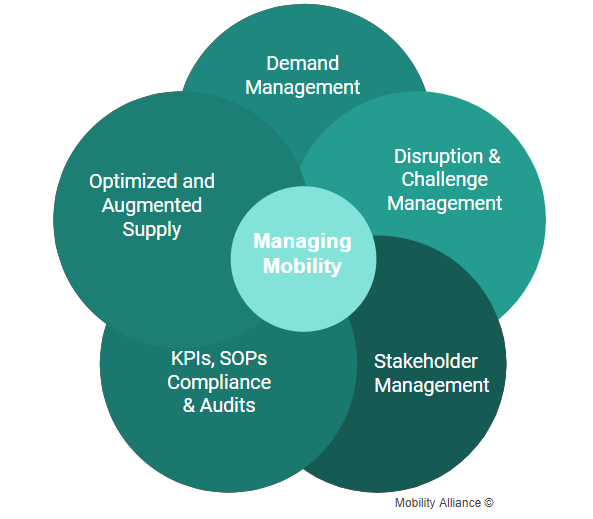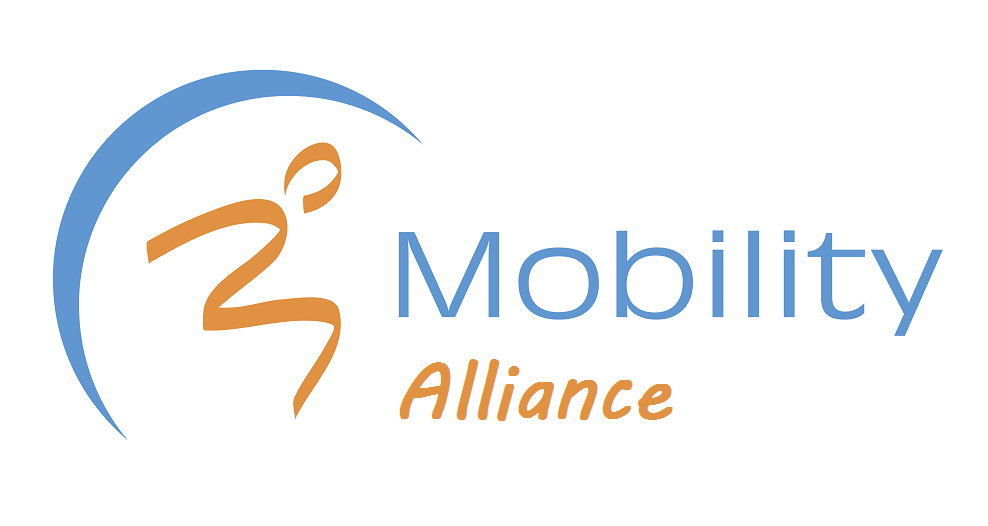‘Mobility’ has become the new buzzword in the transport management arena as companies offer innovative and smarter ways to stakeholders to move their goods, services, and people while reassessing the needs and wants of such movements.
What is Corporate Mobility?
All local, regional, and international goods transport and personal travel need and wants of an organization, including all factors of the needs and costs of movements.

Analyze and act on the needs of movements of people and goods, along with staff, facilities, policies, processes, and trade products in its best efficiency, productivity, profitability, and sustainability.

What is Mobility Management?
Companies and transport units are aware of what CPK and TCO are. Almost all measure and are aware of what the CPK (Cost per Kilometre) is and some even the TCO (Total Cost of Ownership). But the boundaries between Fleet, Transport, Travel, and Expense Management are blurring. Added to the woes many are reluctant to learn the new needs of mobility and to reassess the need of the needs.
Continued convergence and adoption of Mobility Management are expected, covering multi-modal solutions for local & international travel and transportation needs.
Mobility Today!
Mobility needs are on a fundamental transformation from private transport to a shared, more door-to-door, and integrated approach. Mega Trends like urbanization, pollution, congestion, connectivity, and globalization are powering the shift away from private vehicle ownership to new business models like car and load sharing, ride-hailing, integrated mobility, and dynamic shuttles. Technology-enabled devices can now deliver real-time, door-to-door, multi-modal travel, and transport services that yield convenience, time, and cost savings. This disrupts the way we think of transportation and force today’s corporate and government institutions to revisit their mobility need evaluation and management.
Design Thinking
Next comes what tools are available for Transport units to revisit their needs, resources, and strategies. With the use of IoT, and Design Thinking strategies transport units may transform to profit centers, from the conventional cost center augmenting its initial objectives
We live in an era of experiences, and we’ve come to have high expectations for these experiences. They are becoming more complex in nature as information and technology continue to evolve.
TCM Approach – A Paradigm Shift in Transport Management
TCM is all about smart and strategic thinking to remodel goods or product mobility. Multi-model transportation, hub concepts, facility relocation, shared and last-mile services, demand management, and traditional JIT practices come into play as a synergistic game in modern mobility management.
As for staff transport, the concept of TCM or Mobility Management simply allows employees to receive a mobility budget instead of a car allowance. This budget acts as a financial incentive that drives employees to choose sustainable means of travel. Instead of calculating costs per car in the TCO model, the TCM approach considers all aspects of mobility. Thus, the costs are calculated per mobility user.
FUTURE OF MOBILITY
Devises to Enactments.
From TCO to TCM
& BYOD to BYOe
In the TCM model, the fleet and travel functions are combined as one in the same IT platform since these functions are two different manifestations of mobility. IoT, therefore, provides the opportunity to reduce corporate spending while offering effective and better options to employees in these functions.
Technologies from AI to cryptocurrency and online shopping are changing how we live and what it means to be human. CEOs and IT leaders must help their organizations adapt to this changing world.
Rise and the Role of Mobility Manager
Traditionally, companies use a Transport or Fleet manager to manage company vehicles. This role has become the point of managing all transport-related expenditures over time.
But with the IoT, this role has evolved to a more data-centric decision-making role which includes the need assessment as well as varying new options of transportation.
This has led to the transition of the ‘transport manager’ into a ‘mobility manager’, whose key responsibility is to start from need analysis, holistic costs, and value of the movements.
Read more on Transportation Consultancy: Transport Consultancy


